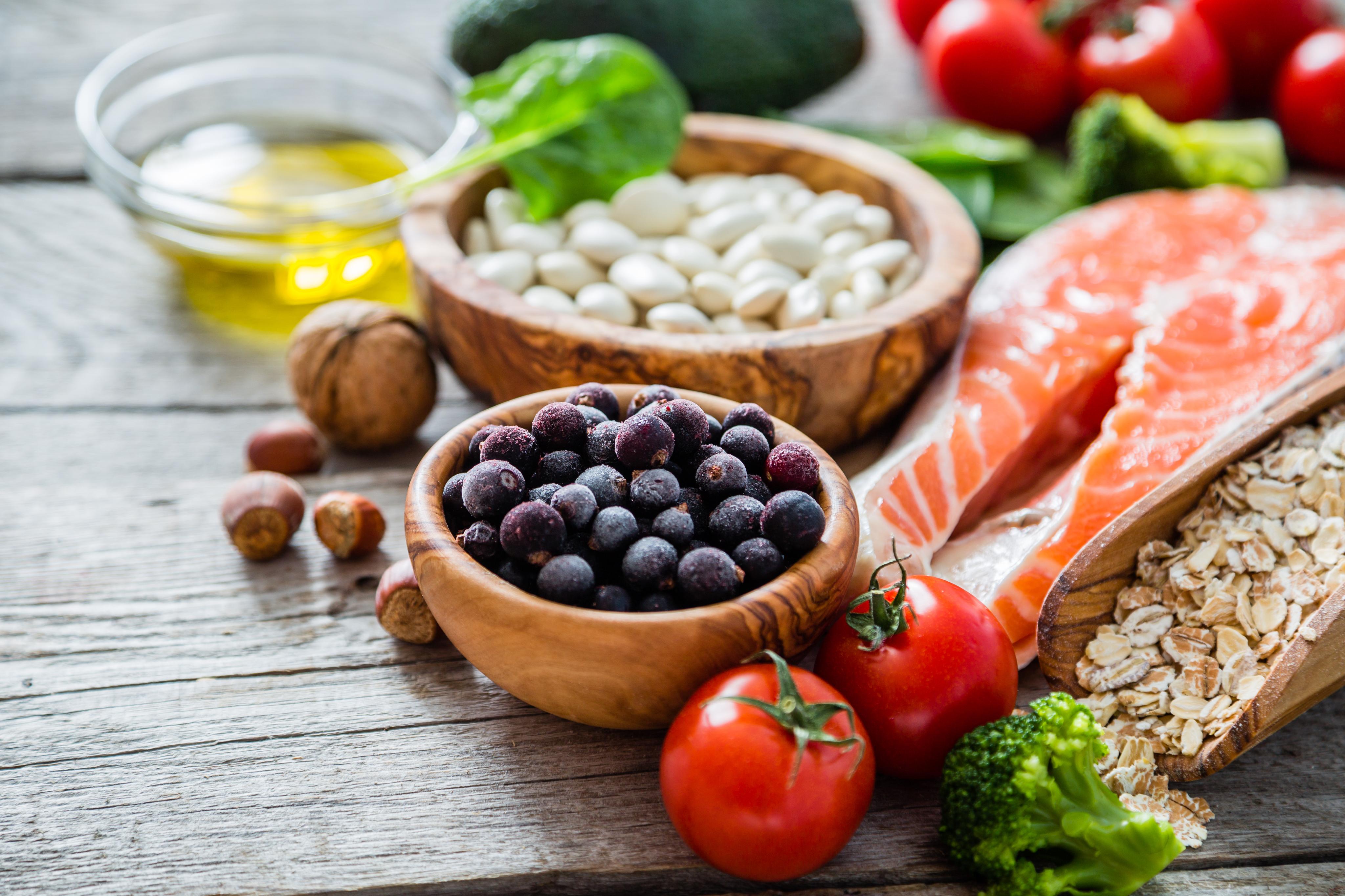Decode Nutrition Facts: Your Guide to Healthy Eating
Staring at a nutrition label and feeling utterly confused? You're not alone! Many people struggle to decipher the information on food labels and understand how it impacts their health. This guide will break down everything you need to know about nutrition facts, empowering you to make informed and healthier food choices.
Understanding the Components of a Nutrition Label
The nutrition label is your key to unlocking the nutritional content of packaged foods. It provides a standardized format for presenting information about calories, macronutrients, vitamins, minerals, and other important components. Familiarizing yourself with each element is the first step toward healthier eating.
Serving Size
The serving size is the foundation of all the information on the nutrition label. It indicates the amount of food that the nutrient values are based upon. Pay close attention to the serving size and compare it to how much you actually eat. If you consume twice the serving size, you're also consuming twice the calories, fat, sugar, and other nutrients.
Many people overlook the importance of the serving size. For example, a bag of chips might list the nutrition facts for a one-ounce serving size, but the entire bag might contain three serving sizes. If you eat the whole bag, you need to triple the listed values to accurately assess your intake. Statistics show that misinterpreting serving sizes contributes significantly to overeating and inaccurate calorie tracking.
Calories
Calories measure the energy you get from a serving size of that food. The nutrition label will tell you the total number of calories per serving size, as well as the number of calories from fat. Remember that calories are essential for bodily functions, but consuming too many calories, especially from unhealthy sources, can lead to weight gain. General recommendations suggest 2,000 calories a day for women and 2,500 for men, but this varies based on individual factors like age, activity level, and metabolism.
Macronutrients: Fat, Carbohydrates, and Protein
Macronutrients are the building blocks of our diet, providing the body with energy and supporting various functions. The nutrition label breaks down the macronutrients into fat, carbohydrates, and protein.
- Fat: Look at the total fat, saturated fat, and trans fat. Focus on limiting saturated and trans fats, as they can raise cholesterol levels and increase the risk of heart disease. Unsaturated fats (monounsaturated and polyunsaturated) are considered healthier fats.
- Carbohydrates: The nutrition label lists total carbohydrates, including dietary fiber, sugars, and added sugars. Prioritize foods rich in dietary fiber, which promotes digestive health and helps regulate blood sugar levels. Be mindful of added sugars, as excessive intake can contribute to weight gain and other health problems.
- Protein: Protein is essential for building and repairing tissues, as well as producing enzymes and hormones. The nutrition label indicates the amount of protein per serving size.
Vitamins and Minerals
The nutrition label also includes information on key vitamins and minerals, such as Vitamin D, calcium, iron, and potassium. These vitamins and minerals are vital for various bodily functions, including bone health, immune function, and energy production. The amounts are typically listed as a percentage of the daily value (%DV). A higher %DV indicates that the food is a good source of that particular nutrient. Aim for foods that provide a significant percentage of your recommended daily value for essential vitamins and minerals.
Decoding Percent Daily Value (%DV)
The Percent Daily Value (%DV) on the nutrition label shows how much of a nutrient in a serving size of food contributes to a total daily diet. The %DV is based on a 2,000-calorie diet, so your individual needs may be higher or lower. The %DV is a useful tool for comparing different foods and making informed choices. Here's a general guideline:
- 5% DV or less: A food is considered low in that nutrient.
- 20% DV or more: A food is considered high in that nutrient.
Using %DV to Make Healthier Choices
Here's how you can use the %DV to make smarter decisions about the foods you eat:
- Identify nutrients to limit: Look for foods that are low in saturated fat, trans fat, cholesterol, sodium, and added sugars. Aim for %DV values below 5% for these nutrients.
- Identify nutrients to increase: Look for foods that are high in dietary fiber, vitamins, and minerals, such as Vitamin D, calcium, iron, and potassium. Aim for %DV values above 20% for these nutrients.
- Compare different products: When choosing between similar products, compare their nutrition labels and select the one that offers a better balance of nutrients.
Navigating Specific Nutritional Information
Beyond the core components, the nutrition label also provides information on specific nutrients that can impact your health. Understanding these details can help you tailor your diet to meet your individual needs.
Dietary Fiber and Added Sugars
As mentioned previously, dietary fiber is crucial for digestive health and blood sugar control. Aim for foods with a high %DV of dietary fiber. Conversely, be mindful of added sugars, which contribute to empty calories and can negatively impact your health. Many food labels now clearly distinguish between total sugars and added sugars, making it easier to track your intake.
Sodium and Cholesterol
Sodium and cholesterol are two nutrients that many people need to monitor. Excessive sodium intake can contribute to high blood pressure, while high cholesterol levels can increase the risk of heart disease. The nutrition label indicates the amount of sodium and cholesterol per serving size. Aim for foods that are low in sodium and cholesterol, especially if you have a family history of heart disease or high blood pressure. According to a 2024 study by the American Heart Association, reducing sodium intake can significantly lower blood pressure in individuals with hypertension.
Putting It All Together: A Practical Example
Let's consider a hypothetical scenario to illustrate how to use the nutrition label to make informed choices. Suppose you're deciding between two different brands of breakfast cereal. Here’s how you can use the nutrition label to compare them:
The following table displays the key nutritional information for both cereals (per serving size):
| Nutrient | Cereal A | Cereal B |
|---|---|---|
| Calories | 120 | 150 |
| Total Fat | 1g | 2g |
| Saturated Fat | 0g | 0.5g |
| Added Sugars | 10g | 5g |
| Dietary Fiber | 2g | 5g |
| Protein | 3g | 4g |
| Sodium | 150mg | 200mg |
Based on this information, Cereal B appears to be the healthier option. While it has slightly more calories and fat, it contains significantly less added sugars and more dietary fiber and protein. The sodium content is also slightly higher, but the benefits of reduced sugar and increased fiber likely outweigh this difference. Remember to consider your individual dietary needs and preferences when making your final decision.
Troubleshooting Common Nutrition Label Misconceptions
Even with a good understanding of nutrition facts, certain misconceptions can lead to confusion. Let’s address some common issues.
- “Zero” Trans Fat is Not Always Zero: Food labels can list "0g" of trans fat if the amount is less than 0.5g per serving size. Small amounts can add up, especially if you eat multiple serving sizes.
- "Sugar-Free" Doesn’t Mean Calorie-Free: Products labeled "sugar-free" may still contain calories from other sources, such as fat or artificial sweeteners.
- Natural Sugars vs. Added Sugars: While fruit contains natural sugars, which are typically fine in moderation, the focus should be on limiting added sugars found in processed foods.
Pro Tips for Mastering Nutrition Labels
Here are some additional tips to help you become a pro at reading and using nutrition facts:
- Compare Unit Prices: When buying similar products, compare the unit prices (price per ounce or pound) to get the best value.
- Read the Ingredient List: The ingredient list is listed in descending order by weight. This can give you insight into the main components of the food.
- Focus on Whole Foods: While understanding nutrition labels is important, prioritizing whole, unprocessed foods like fruits, vegetables, and lean proteins is the best way to ensure a healthy diet.
FAQ: Your Nutrition Label Questions Answered
Here are some frequently asked questions about nutrition labels:
- What is the difference between "total sugars" and "added sugars"? Total sugars include both naturally occurring sugars (like those in fruit) and added sugars (like those added during processing). Added sugars are the ones you should limit.
- How accurate are nutrition labels? Nutrition labels are generally accurate, but there can be slight variations due to manufacturing processes and natural variations in ingredients.
- Can I use nutrition labels if I have specific dietary needs (e.g., diabetes, allergies)? Yes, nutrition labels are essential for managing specific dietary needs. Pay close attention to the carbohydrate content if you have diabetes and carefully review the ingredient list if you have allergies.
By understanding how to read and interpret nutrition facts, you can take control of your diet and make healthier choices. Start using this knowledge today to improve your overall health and well-being. What are your biggest challenges when reading food labels? Share your questions and experiences in the comments below!

